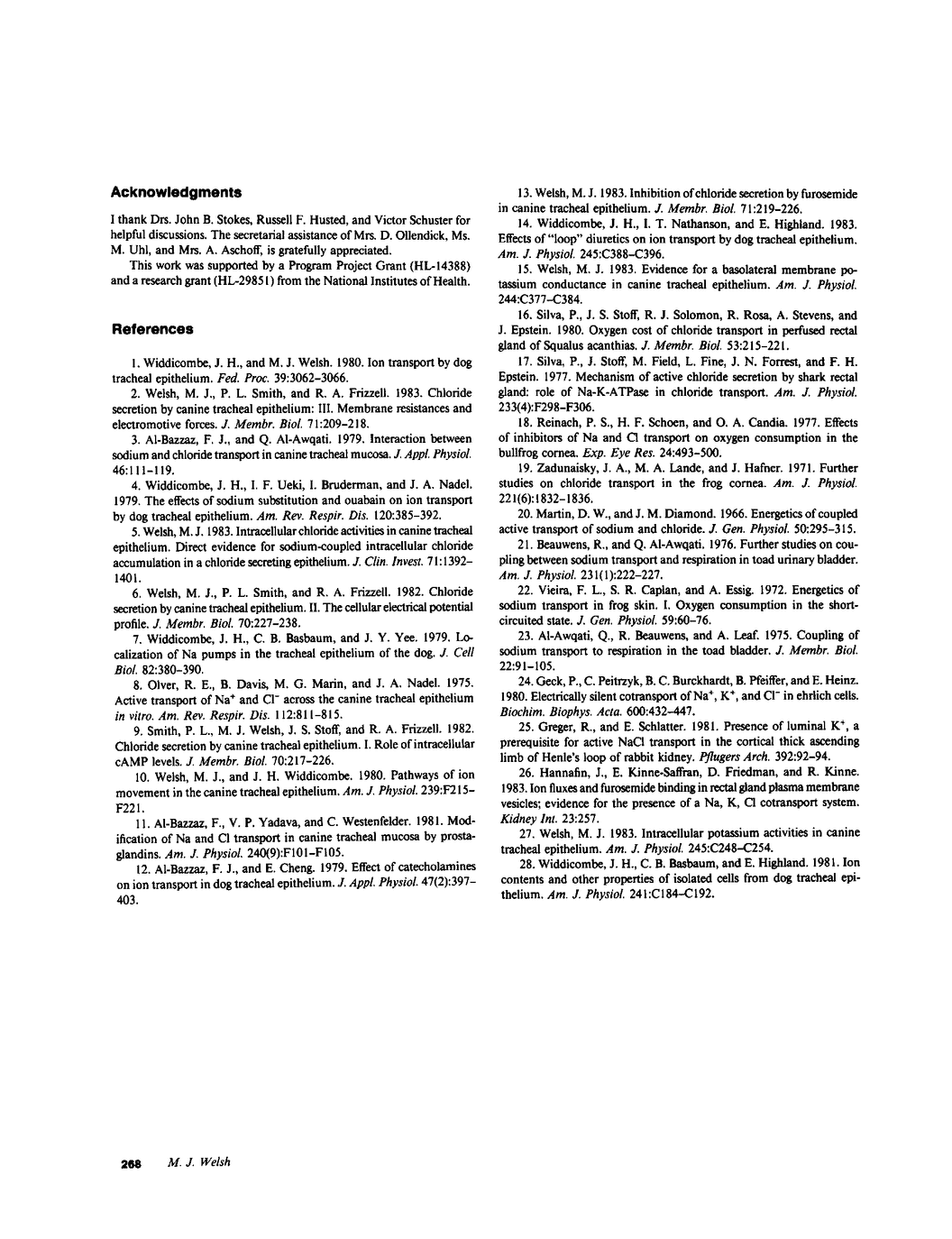Abstract
Canine tracheal epithelium secretes Cl and absorbs Na; the energy for both is derived from the activity of the basolateral membrane Na-K-ATPase. These properties allowed us to examine the energetics of Cl secretion by directly comparing the metabolic cost of Cl transport with the metabolic cost of Na transport. We measured the change in short-circuit current and O2 consumption rate that was produced by a variety of maneuvers that alter Na and/or Cl transport rate. The experimental interventions included the use of the secretagogue epinephrine, the Cl transport inhibitor bumetanide, the Na transport inhibitor amiloride, the Na-K-ATPase inhibitor ouabain, and ion substitutions. The O2 consumption rates required for Na and Cl transport were compared in each individual tissue. The results indicate that the oxygen cost of Cl transport is significantly less than the oxygen cost of Na transport: two to four Cl ions are transported for the same metabolic cost that is required to transport one Na ion. These findings suggest that the basolateral membrane Na-dependent Cl entry step couples the entry of more than one Cl ion to each Na ion.
Authors
M J Welsh
Other pages:
| 262 | 263 | 264 | 265 | 266 | 267 | 268 |




